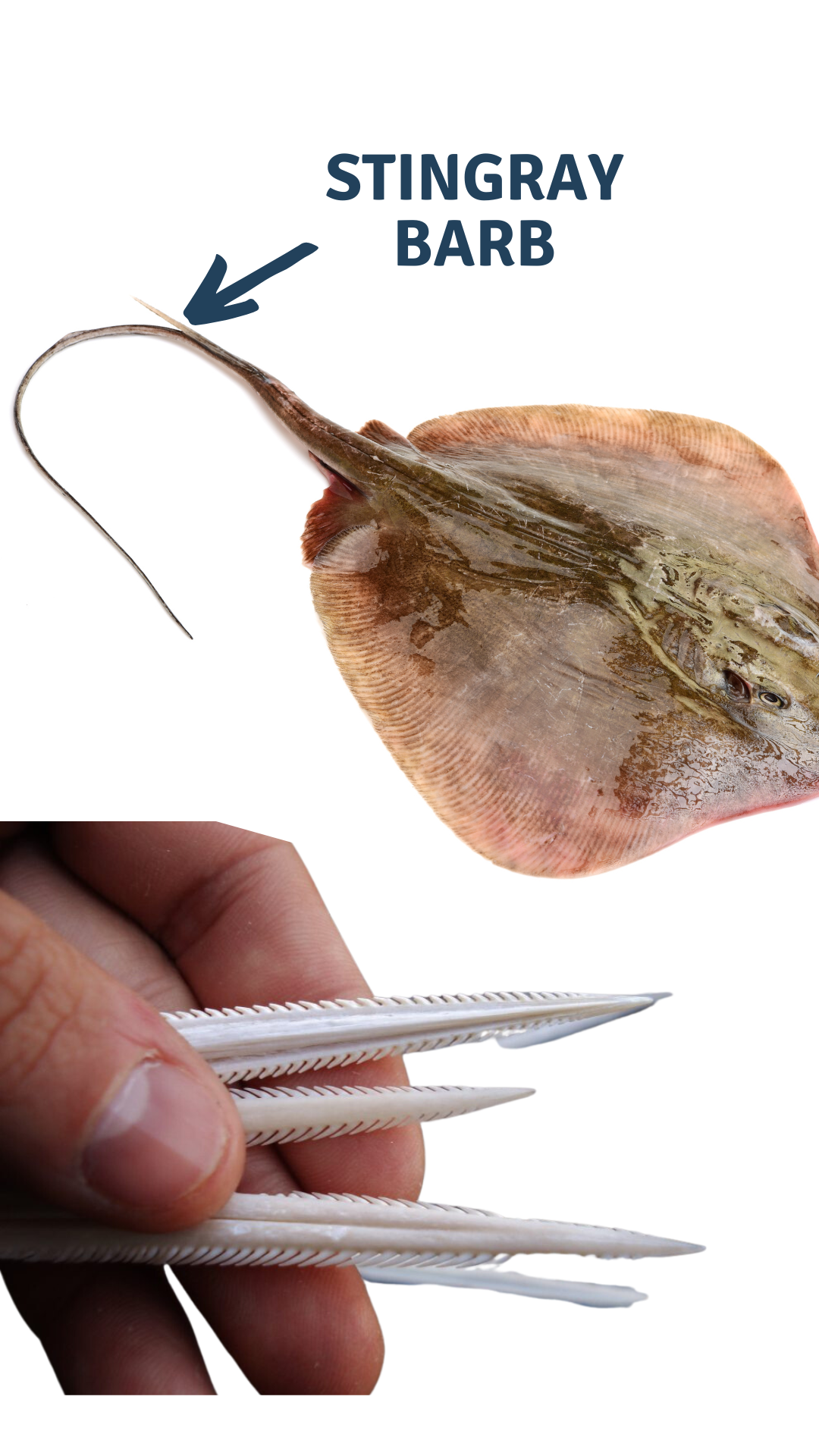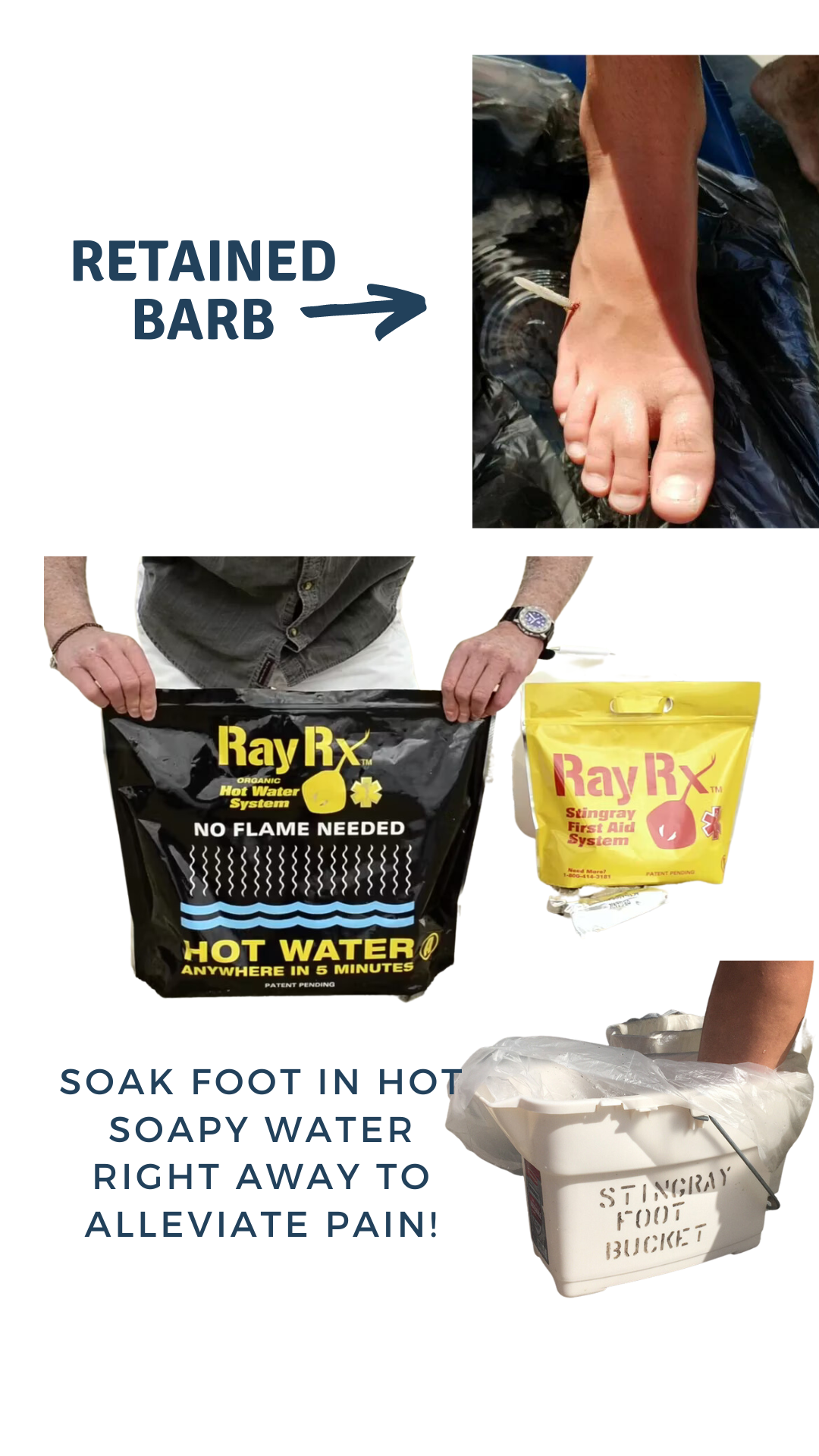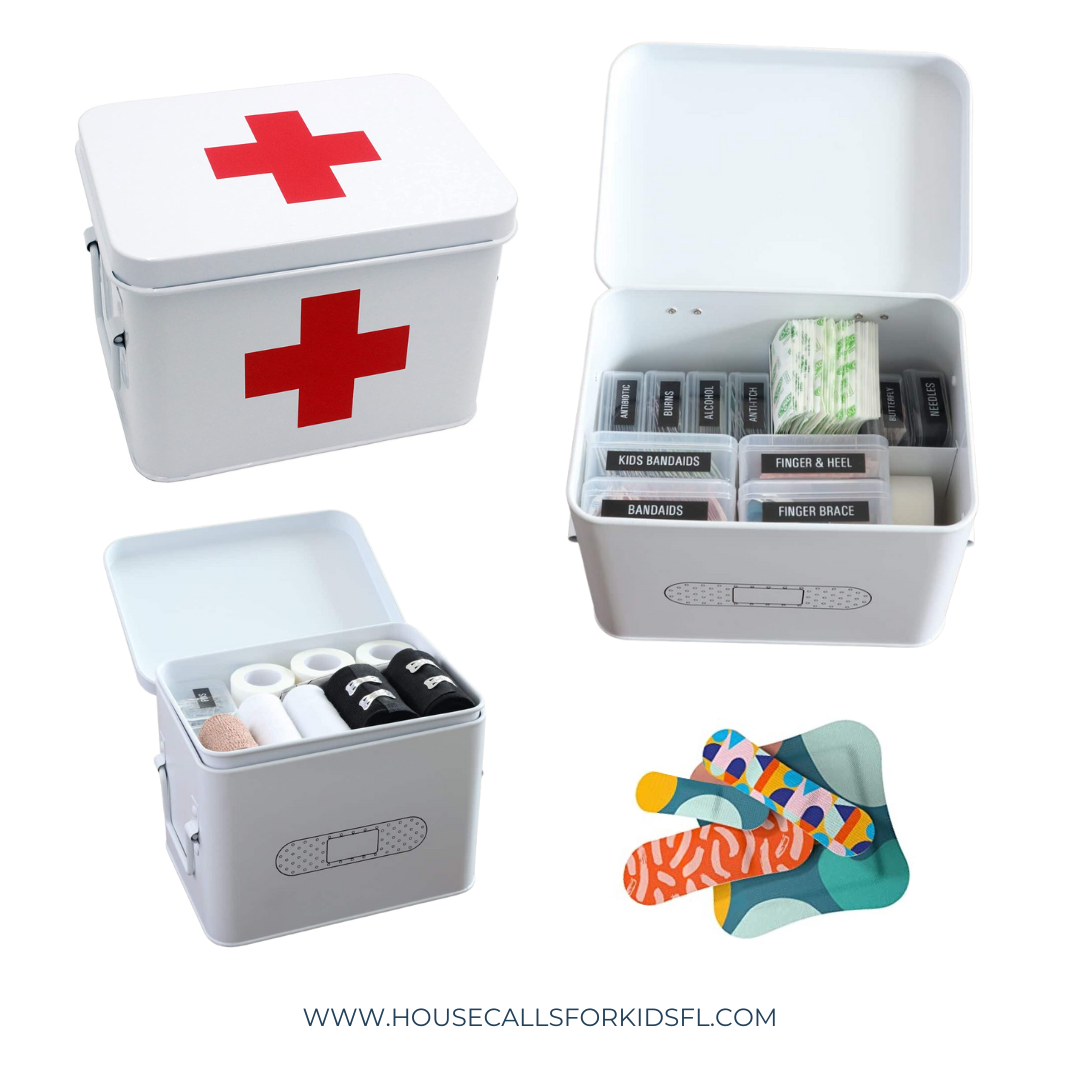Stingray Injuries: Prevention, Symptoms and Treatment
(updated 3/25/25)
As the warm weather calls for exciting beach adventures with our little ones, it's important to be aware of the potential dangers that lurk beneath the waves. One such danger is stingray injuries, but don’t panic! We've got you covered with some essential tips to keep our kids safe, plus a solution for any accidents that may occur.
Understanding Stingrays:
⚠️ Stingray Injuries: What You Need to Know ⚠️
Stingrays are flat, bottom-dwelling marine animals often found in shallow coastal waters, especially in the Gulf of Mexico and along Florida’s beaches. They're not aggressive by nature and typically swim away when disturbed. However, when accidentally stepped on or startled, a stingray may whip its tail and sting in defense.
Their tail contains one or more sharp barbed spines that can puncture the skin and deliver venom, causing immediate pain and potential complications if not treated properly.
Prevention Tips: 🚨 Prevention is Key! 🚨
The best way to avoid a stingray sting is to do the Stingray Shuffle! Instead of stepping forward while walking into shallow water, shuffle your feet along the sand. This movement sends vibrations that alert stingrays of your presence, encouraging them to swim away.
Additional Prevention Tips:
Wear water shoes for added foot protection.
Avoid murky waters where visibility is low.
Teach kids to enter the water slowly and to never jump or dive into shallow coastal areas.
Check out the stingray shuffle here!
Signs and Symptoms of a stingray injury:
If stung, you or your child may experience:
Immediate sharp, burning pain at the injury site (usually a foot or ankle)
Swelling and redness
Bleeding or a visible puncture wound
Muscle cramps or weakness
Dizziness or nausea
In rare cases, difficulty breathing or allergic reactions
Most symptoms are caused by the venom, which affects soft tissue and nerves around the wound. Pain can intensify in the first 30–60 minutes and usually lasts for a few hours.
The severity and presentation of symptoms can vary depending on factors such as the location of the injury, depth of the sting, and individual sensitivity. Here are common symptoms associated with a stingray injury:
Immediate Intense Pain: The sting from a stingray is usually extremely painful and can be described as a burning or throbbing sensation at the site of the injury.
Bleeding and Wound: The stingray's barb can cause lacerations or puncture wounds, leading to bleeding.
Swelling and Redness: The affected area may swell, become red, or inflamed due to the body's immune response to the sting.
Venom Effects: Stingrays possess venomous glands, and in some cases, the venom can cause additional symptoms such as:
Numbness or Tingling: The venom can affect nerves in the area surrounding the wound, leading to sensations of numbness, tingling, or even weakness.
Radiating Pain: The pain may extend beyond the immediate site of the sting, radiating to nearby areas.
Muscle Cramps: Some individuals may experience muscle cramps or spasms near the injury site.
Nausea and Vomiting: In rare cases, systemic symptoms like nausea and vomiting may occur, typically associated with severe stingray injuries or allergic reactions.
Fever and Infection: If the wound becomes infected, symptoms like fever, increased redness, warmth, and discharge may develop. Prompt medical attention is necessary to prevent complications.
It's important to note that stingray injuries can vary in severity, and some individuals may not experience all of these symptoms. In any case of a stingray injury, seeking immediate medical evaluation and treatment is recommended to ensure appropriate care and management.
What to Do if a Stingray Injury Occurs:
Despite our best efforts, accidents can still happen. If your child does get stung by a stingray, here's what you can do to help them:
1. Get Out of the Water Immediately:
Help the injured person out of the water to prevent further injury or drowning.
2. Rinse the Wound with Saltwater (Not Fresh Water):
Avoid using fresh water initially, as it can sometimes worsen the sting.
3. Remove Debris Gently (Do Not Remove Barbs):
If there is visible sand, shells, or debris, rinse gently. Do not attempt to remove a stingray barb—this should be done by a medical professional to prevent further damage.
4. Soak the Area in Hot Water:
Soak the injured area in hot (but not scalding) water—ideally between 110°F to 115°F—for 30 to 90 minutes. Heat helps neutralize the venom and relieve pain. Rewarm the water as needed. Use a thermometer if available to prevent burns. (Stingray bags for first aid kit here)
5. Control Bleeding:
Apply gentle pressure with a clean cloth if there is active bleeding.
6. Seek Medical Attention Promptly:
All stingray stings should be evaluated by a healthcare provider, even if symptoms seem mild. The wound may require:
X-ray to check for retained barbs
Tetanus booster if not up to date
Antibiotics to prevent infection
Pain management
When to Call 911:
Difficulty breathing or chest tightness
Fainting or severe dizziness
Sting to the chest, abdomen, or neck
Suspected allergic reaction (swelling of lips, face, or tongue)
Are Stingray Stings Dangerous?
While stingray stings are usually not life-threatening, they are painful and can become serious if untreated. The main complications include infection, retained spines, and tissue damage. Prompt care significantly reduces the risk of long-term problems.
Emergency Preparedness:
-Familiarize Yourself with Local Resources: Before your beach trip, research nearby medical facilities, their contact information, and directions, so you're prepared in case of an emergency.
-Know Basic First Aid: Learn first aid techniques for treating stingray injuries, including hot water soaking, to provide immediate relief before medical help arrives. Make sure to have a first aid kit handy in the car.
We know it can be scary when your child is injured at the beach. The good news?
Most stingray stings are treatable and heal well with prompt first aid and medical evaluation. With a little preparation—and that trusty Stingray Shuffle—you can confidently enjoy Florida’s beautiful beaches with your family.
House Calls for Kids provides convenient, at-home pediatric care throughout the Tampa Bay area. If your child is stung or injured and you're unsure what to do next, we’re just a call or text away. Our pediatric providers can evaluate and treat stingray injuries, right from the comfort of home.
➡ Save our number in your phone before your next beach day!
www.housecallsforkidsfl.com
#BeachSafety #StingrayInjuries #PreventionTips #EmergencyPreparedness #FamilyFun #ParentingTips



